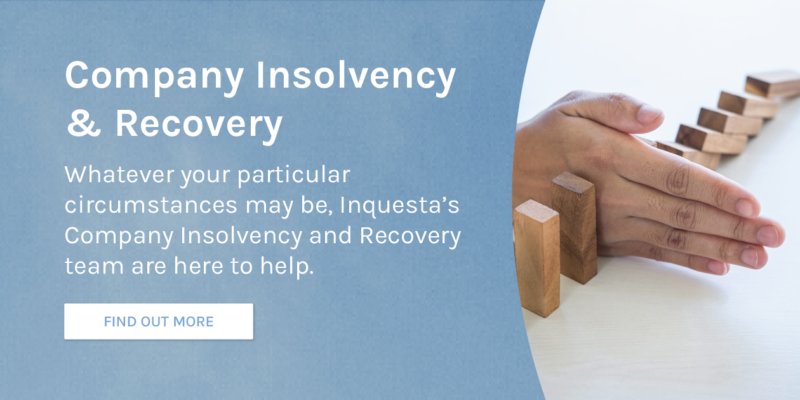Maintaining financial health, corporate flexibility and adaptability is crucial if you want long-term success. One aspect that can have a high impact on a company’s bottom line, if left unchecked, is employee costs. We understand that the notion of reducing staff costs may seem daunting. However, from bolstering financial stability to sharpening competitiveness, the advantages can be compelling.
This blog aims to shed light on some of the tangible benefits that can arise from such measures as well as provide valuable tips for implementing these changes effectively and with employee well-being in mind
Benefits of Reducing Your Staff Costs
From improving your financial stability, enhancing your competitiveness, and improving resilience in the face of adversity, there are a number of benefits of reducing your staff costs. However, it’s important to note that businesses should approach making any measures to this end with care and consideration for the well-being of employees.
Open and clear communication and a focus on always maintaining a positive working culture is vital if you want to successfully implement cost-cutting measures. The primary benefits you can gain from cutting your employee costs include:
Improved Financial Stability
Reduced labour costs can have a hugely positive impact on a firm’s financial stability. Lower labour expenses directly reduce the bottom line and increase profit margins. This additional capital can be reinvested into the business to allow for growth, used to pay debts, or can be distributed to shareholders.
Additionally, the higher your profit margins, the better equipped your company will be to weather the storms that can come with economic uncertainties and come out the other side unscathed.
Enhance Corporate Competitiveness
The more cost-effective you run your company, the more competitive you can be in the market. This allows you to be more flexible with your pricing, potentially giving you the edge on competitors within your industry.
Attract Investors
The more cost effective your business is, the more confidence prospective investors will have in you. Somebody looking to invest will view the company in a much more favourable light if it clearly and actively manages costs.
Limit Debt
Significant outstanding debt can result in you being faced with prospects such as company administration, insolvency, liquidation, and winding up petitions on the horizon.
If your business has outstanding debts, reducing staff costs can provide you with some much-needed additional funds to allow you to pay back your loans and better meet your financial obligations.
8 Ways to Reduce Your Employee Costs
From reducing overtime hours and hiring part-time positions, to cross-training your staff and implementing flexible working strategies, there are a number of ways to reduce your employee costs beyond simply trimming your workforce. This includes the following:
Limit Overtime
Overtime involves paying your employees extra (often time and a half) if they work beyond their expected weekly hours. This additional rate, often while your employee is undertaking their usual role, can have a significant knock on effect on your labour costs and make them balloon over time.
If, at the end of the month, your overtime costs are too high you should try to keep better track of the hours your team works each week. This will help you to avoid any unnecessary overtime, thus significantly reducing labour expenses.
Evaluate Your Staffing Levels
In business, difficult decisions sometimes need to be made. If your employee costs are too high and it is having a knock on effect on your finances, you may need to conduct an assessment of your current staffing levels.
You can identify if any areas of the business could be considered redundant or could be streamlined in any way. This method can be seen as drastic for some as large amounts of redundancy in a business can significantly impact workforce morale and decrease the quality of your offering.
Better Training
A clever way you can limit your staff costs is to consider ways you can ‘cross-train’. Cross training refers to the practice of training members of your team in skills beyond just their usual day to day job.
While this may then result in you needing to pay this staff member more money, it is unlikely to be more than the cost of a dedicated worker for that role.
Investing in upskilling your staff can also significantly enhance productivity. A well-trained team will be able to accomplish significantly more, often with fewer resources and supervision, leading to long-term savings for you.
Consider Flexible Working Arrangements
One of the most recent innovations in reducing employee costs is the increase in remote working. If you embrace remote working options or flexible schedules, you can reduce overhead costs that come with having a 9-5 office space.
Flexible working has also been known to boost team morale and productivity as it allows your workers more time at home to spend with loved ones and less time commuting.
Explore Part-Time or Contract Position Options
Some non-core roles may be better served on a part-time or contractual basis.
This would allow you to utilise these specialised skills when they are actually needed, without the long-term commitment to a full time position with the additional cost attached.
Better Utilise Technology
There have been a wide array of recent innovations and technologies that can allow a company owner to automate some routine tasks. Implementing some of these into your day-to-day operations can reduce the need for unnecessary manual labour.
Examples of technology that can support your company include:
- Project management softwares
- Chatbots to take care of customer support
- Payroll software to streamline the pay process
Limit Recruitment Cost
The cost to bring a new member of the team on board should be factored into your employee costs. This amount can vary greatly depending on a few factors. Costs to keep in mind when hiring a new team member include:
- How much your recruitment team will cost
- The salaries of extra team members involved in the process
- Advertising and online job board costs
To limit these costs, you should do your best to reduce staff turnover. This can be done by offering quality of life incentives to keep your staff happy — and these offerings may not even need to cost you large sums.
Reduce Absenteeism
Absenteeism is believed to cost UK businesses upwards of £14 billion per year. While the reason for these missed days is difficult to quantify, it is believed that the most common causes for absenteeism relate to:
- Mental health
- Burnout
- Care responsibilities
Staff wellbeing took centre stage during the COVID-19 pandemic, as people got used to a different way of working that perhaps they felt reflected their wants and needs more. It shone a spotlight on just how important it can be to look after wellbeing and happiness within your team — and how much money it could save you.
Inquesta: Financial Guidance When You Need it Most
With a few choice tips to reduce employee costs in mind, it’s essential to also recognise that sometimes, despite the best efforts of company directors, financial challenges faced by a business may be too much to overcome with simple methods.
If factors such as high operational costs cannot be turned around and resolved quickly enough, it could push you towards insolvency and the daunting prospect of liquidation. If this is the case, it’s time to turn to a seasoned professional for guidance; it’s time to contact Inquesta.
Inquesta is a leading name in the field of insolvency. Our dedicated team of experts specialise in crafting tailored solutions to address the unique challenges your business is faced with. When simple methods aren’t sufficient, our comprehensive understanding of insolvency and liquidation, built up through years of working on such cases, can provide a much-needed beacon of hope.
During times of financial uncertainty, clear communication is paramount. At Inquesta, we pride ourselves on transparent and honest dialogue at all times, ensuring that you will be fully informed at every single stage of the process. For information about what our team of experts can do to help you, get in touch today.





